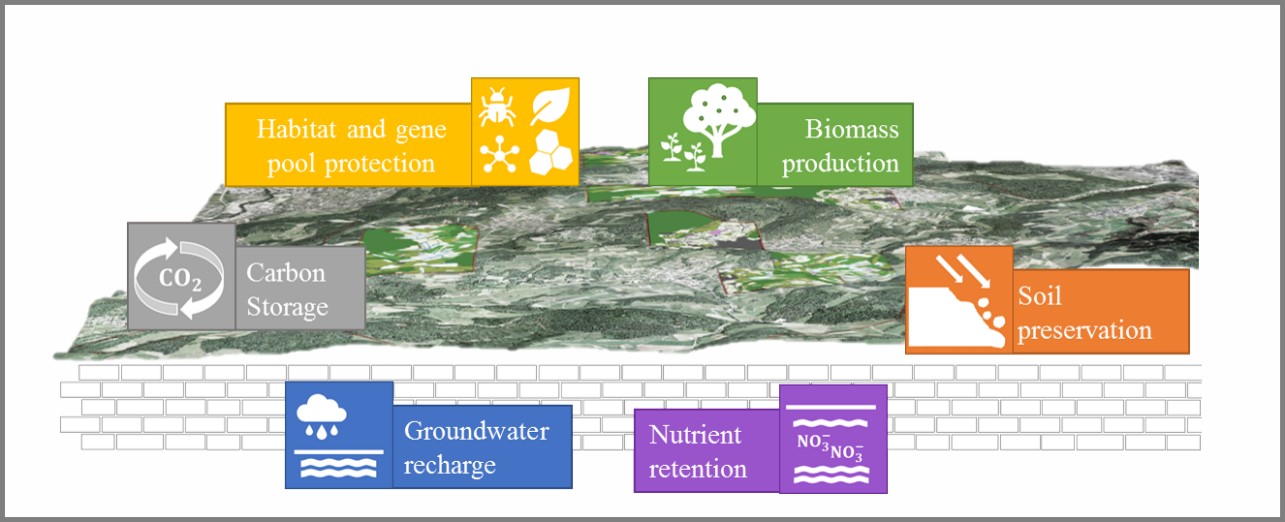PhD thesis “Assessment of ecosystem services provided by agroforestry systems at the landscape scale” was carried out at Federal Department of Economic Affairs, Education and Research (EAER) Agroscope in the Research Division Agroecology and Environment and the Department of Geography at the University of Zurich (Switzerland) by Sonja Kay. The work was part of the AGFORWARD project.
The thesis investigated the provision of ecosystem services (ES) in landscapes with and without agroforestry, their related economic benefits and their potential contribution to mitigate climate change.
Firstly, contrasting landscapes dominated by (a) agroforestry or (b) agriculture were selected and landscape test sites (LTS, 1 x 1 km) were mapped in the field. Bio-economic and environmental models were run to quantify seven provisioning and regulating services (biomass production, groundwater recharge, nutrient retention, soil preservation, carbon sequestration, pollination and habitat diversity). The outcomes revealed a higher supply of regulating ES in landscapes with agroforestry, while provisioning ES were better represented in agricultural landscapes. The same relationship was obtained by applying the spatial model to 12 European agroforestry landscapes (montado in Portugal, dehesa and soutus in Spain, olive groves in Greece, orchards in Switzerland, bocage in France, hedgerow landscapes in the UK and Germany, and wooded pastures in Romania, Switzerland and Sweden). Traditional agroforestry systems, regardless of type, region and composition, had a beneficial impact on regulating ES. Nitrate and soil losses were reduced and carbon sequestration, pollination services and the proportion of semi-natural habitats were higher in agroforestry landscapes. Agricultural landscapes were linked to a higher annual biomass yield and a higher groundwater recharge rate.
Secondly, the economic performance of marketable ES and non-marketable ES in these contrasting landscapes were assessed. Agroforestry areas had slightly lower market outputs than agricultural areas if the focus was only on marketable ES. However, when monetary values for non-marketable ES were included, the relative profitability of agroforestry landscapes increased. A gap in economic assessments that fails to account for ecological benefits was detected.
Finally, European priority areas for introducing agroforestry systems were identified by assessing environmental farmland deficits in soil, water, climate, and biodiversity. For each priority area, agroforestry candidates were proposed by regional experts. Systems were highly variable and their ability to capture carbon was evaluated; this evaluation resulted in a storage potential of between 0.09 to 7.29 t C ha-1 a-1. Assuming that the priority area, which makes up 8.9% of European farmland, were to be converted to agroforestry, carbon emissions of agriculture could be reduced by up to 43.4 %. Consequently Agroforestry can contribute significantly to European climate targets.
Link to the PhD Thesis will be available soon. If you wish, you can Kay [dot] sonja [at] agroscope [dot] admin [dot] ch (contact Sonja Kay by email).












